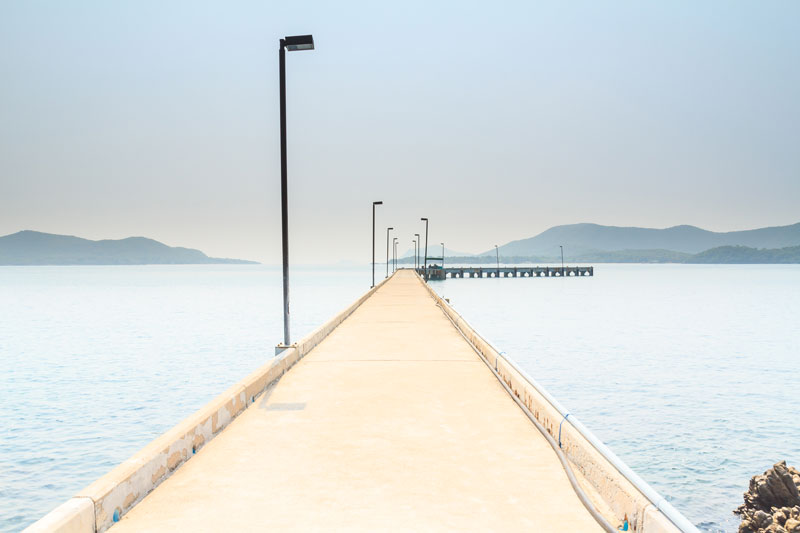A dock is the physical connection between earth and sea at a port. This union bears noteworthy complexity, into which we will delve in this review of the types of docks we may find, their uses and their characteristics.
There are two fundamental concepts regarding docks: their destination and their physical surroundings.
- The destination of the dock determines the type of freight and vessels using it. This helps to define the length, depth and height, storage surface areas, etc.
- Knowledge of physical surroundings is fundamental in order to select the most efficient kind of dock. On one hand, this refers to phenomena such as tides, undertows, currents, and wind; on the other, the type of land, both at draft level and below.
Types of docks based on configuration
Gravity docks
Gravity docks are docks where the land is contained by the very weight of the dock itself. Their reduced specific surface area makes them the most long-lasting.
Caisson docks
These consist of a pre-manufactured reinforced concrete caisson wall. These caissons are transferred by floating them to their location to be sunk and filled with concrete or aggregates. This dock is the most susceptible to inclement weather.
Pre-manufactured block docks
In this case, the dock is made of dry-built concrete blocks, placed underwater with cranes. These are docks for reduced depths, where caissons cannot be used.
Underwater concrete docks
These are retaining docks made on-site, underwater. The tend to have uniform or slightly scaled thickness to facilitate framing.
This dock is suitable:
- When the land has a high load capacity and is not inclined toward deformation.
- In sheltered areas and docks with depths less than 10 metres.
- When pre-manufactured blocks cannot be used (space or equipment limitations to place them).
Pile docks
These are platform structures upheld by piles. They can be made on-site or pre-manufactured. Their specific surface area is large, so they quickly deteriorate if their design and the materials used are inadequate.
They are ideal when:
- The land has low load capacity.
- In seismic zones, where low-mass structures are advisable.
- In very deep zones, where a gravity dock would be economically prohibitive.
Slurry docks
These are structures with a concrete slurry wall. They transfer the load to the land and the back of the wall by fixing and anchoring, respectively. These docks have the lowest life cycle, given their greater specific surface area.
Fenders for longer-lasting docks
Whatever kind of dock is in question, it requires port equipment adapted both to the physical environment and to how it is used. To lengthen a dock’s life cycle, the fenders are especially relevant, as they absorb kinetic energy from the vessels.
At Prosertek, we are specialists in fenders and we have the best solution adapted to each type of dock, collaborating with port authorities, construction companies, contractors and engineering companies, from initial fender calculation to installation and maintenance.



Comments are closed.